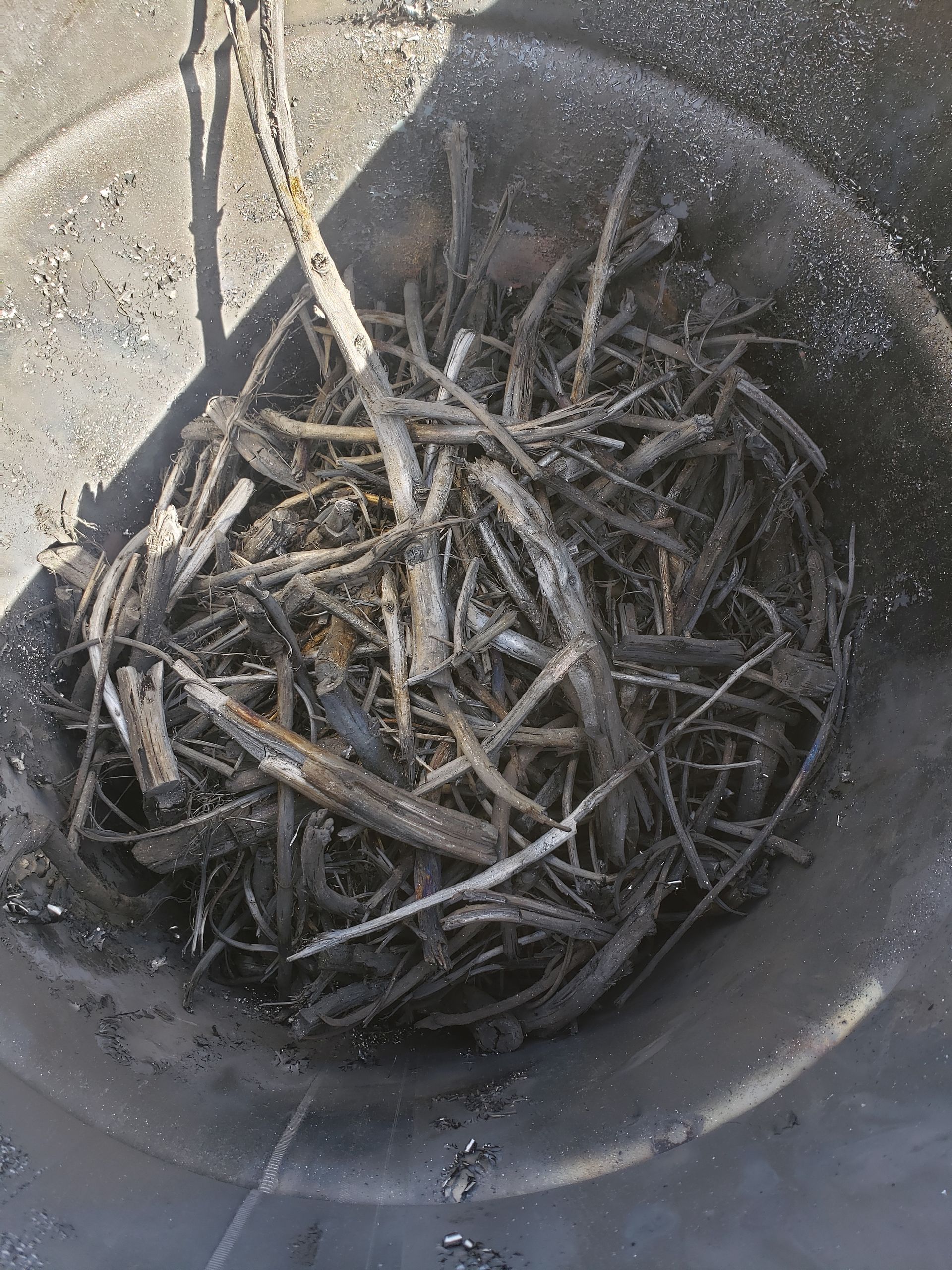What Is HempChar?
HempChar is made from the biomass of the hemp plant such as the stems and stalk. The hemp biomass is cooked in a kiln without oxygen. This cooking process is called pyrolysis. This results in a charcoal like substance that is know as biochar. However, this biochar is uniquely different due to its biomass choice of hemp making it HempChar.
What is the Difference In Biochar and HempChar?
We are glad you asked!
In Simplistic terms, HempChar has a higher British Thermos Unit (BTU).
Biochar is made from multiple different types of plant biomass while HempChar is made of only one type of biomass,.. Hemp. The main choice of biomass for biochar is usually wood. According to a study by the University of Extension, One pound of oven-dry wood of any hardwood species has an available heat value of about 8,600 Btu. Resinous softwood species, such as shortleaf pine, tend to average slightly higher at 9,050 Btu per oven-dry pound. The woody inner core of hemp has a much higher potential to burn hotter and cleaner than that of wood making HempChar a superior source of use. It is also economical in the sense that wood can take years to grow and does not sequester as much CO2 as hemp can during its fast short term life span. these statements alone show that when hemp is used as a replacement to wood, your finished product is always more superior.
HempChar vs Regular Biochar
Both HempChar and Biochar are pretty much the same thing with the main difference being that all HempChar is biochar but not all biochar is HempChar. As earlier stated HempChar is specifically only made out of hemp mainly from the plants stems and stalk.
Besides this obvious statement, HempChar does have the upper hand in comparison to other forms of biochar.
The two main reasons why HempChar is better than typical biochar is because of its high British Thermal Units (BTU) and its high absorbency rating. Hemp having a high BTU means that it has the potential to burn at a higher degree than typical biochar cooked from wood. The hotter you cook the char, the more porous it becomes and the more surface area it has. Increased Surface area make for the char to absorb nutrients and water more effectively and release it to the growing crop as well as harbor beneficial microbes. Hemps high absorbency in its natural state is also a contributing factor to these same properties. When cooking any forms of biochar, the biomass used in the kiln keeps it natural shape. This means if you use biomass with high absorbency properties, it will keep that form to a degree while still being enhanced by the properties that are included after the transformational process into biochar.

What's The Difference Between Biochar and Charcoal?
At first glance and internet searches, biochar seems to be the same thing as charcoal and don't seem to have much difference. They are both cooked in a pyrolysis kiln and look similar enough so what is the difference? A lot of people writing about this topic allows one to assume that the only difference is in the use of the char. Charcoal is used as a fuel source and biochar is ground up and used as a soil amendment. This is true but it goes more deeper on a micro level then just that. The biggest difference is that biochar is cooked for a longer period of time and usually at a hotter degree. The more longer and hotter you cook the biomass, the more it will burnout the biocarbon's in the plant matter. This increases the chars surface area. A larger surface area allows the char to capture toxins and heavy metals in the soil, retain moisture, and harbor beneficial nutrients and microbes for crops.
Increasing the char's surface area through a pyrolysis done at hotter and longer degrees "activates" it without the use of chemicals. The higher the surface area of the char, the more activated it becomes.
What the difference between activated charcoal and biochar?
Their is nor a difference in activated charcoal and biochar accept for the use of it. When you use activated charcoal for the soil, it becomes biochar or as the Aztecs called it 2,000yrs ago 'Terra-Prata'.